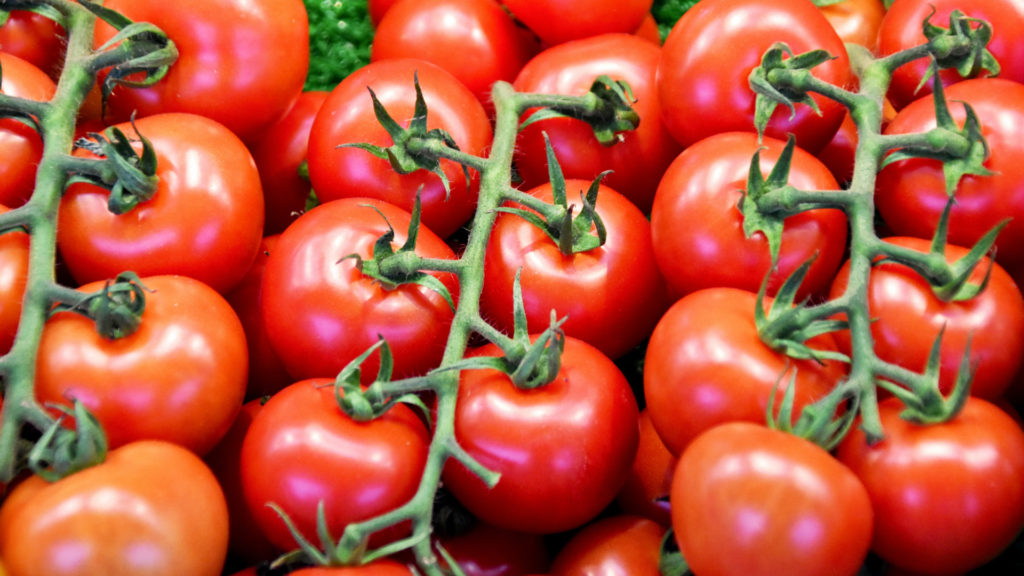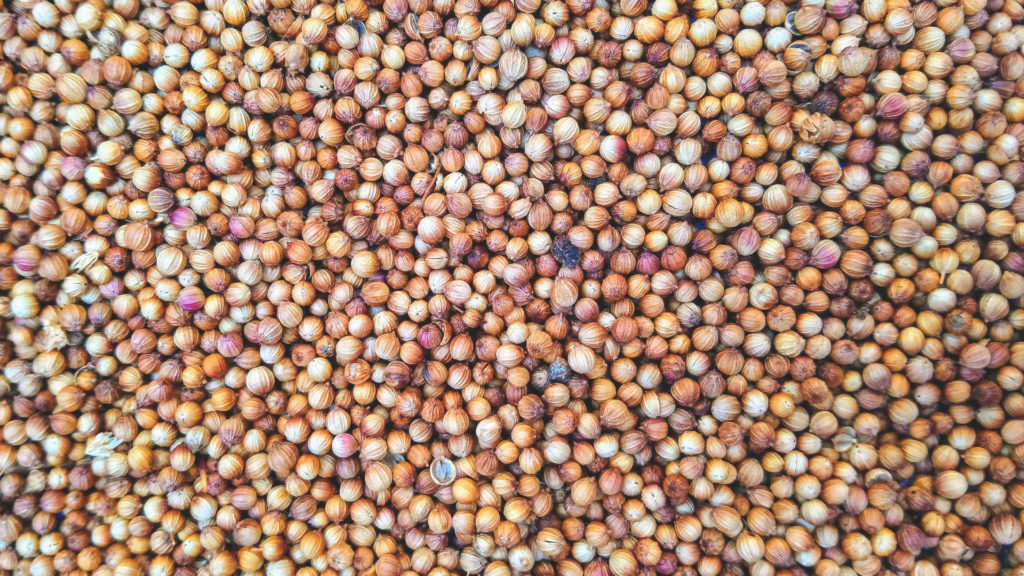Playing ketch-up with recent developments in Lycopene Recovery
Our previous blog post discussed the phenolic compounds that could be extracted from solid wastes associated with the production of tea. However, tea is not the only food product on the market rich in antioxidants and valuable extracts.
Tomatoes have been extensively studied for their nutritional value as well as bioactive compound content. Tomato pomace is the largest waste stream associated with the production of tomato-based products, such as purees and juices. Tomato puree is a principal component of many major products, including ketchup, soups, and ready meals. Tomato pomace comprises around 5% of the total mass of the tomato fruit. Italy alone produces annually around 5.1 million tonnes of tomatoes for industrial processing, potentially creating 255,000 tonnes of food waste per year.

Photo by Waldemar Brandt on Unsplash
A particular chemical of interest present in the peels and seeds of tomatoes is lycopene. Lycopene is a carotene and is responsible for the vibrant red colour in tomatoes. Other carotenoids present in tomato-based waste include β-carotene and lutein. Extensive research has been conducted on the properties of lycopene due to similarity to the phenolic compounds present in tea, namely its antioxidant properties. Lycopene is a sought-after supplement and nutraceutical for its effects reducing oxidative stress. It is currently undergoing preclinical and clinical trials exploring its efficacy on aiding against cancer development, as there is a reverse correlation between levels of lycopene in the bloodstream and occurrences of cancer. Lycopene has also been reported to aid diabetic metabolism of glucose and lower rates of angina and blood pressure. The bioavailability of lycopene differs depending how it is consumed and the meal it is consumed with. It is also thought that lycopene bioavailability decreases with age. Due to its reported health effects and decreased absorption with age, lycopene supplementation is becoming increasingly popular.
Supplements of tomato extracts, containing 10-40mg of lycopene per dose, retails for around 50p per pill. Laboratory grade, ~98% pure lycopene currently sells for around £131/mg. This cost presumably correlates to difficulty in extraction and purification. Tomato waste typically contains around 510mg of limonene per kilogram of dry waste. Meaning each kilogram of pomace has up to £66,810 of limonene, before factoring in production costs. It should be noted that this is assumed to be an isomerically identical composition of lycopene. Lycopene has at least seven known isomers, of varying thermal stabilities, which it is prone to shifting between. That is more than sufficient lycopene for a packet of supplement tablets or for a sufficient dose as a nutritional supplement.
Extraction of lycopene from discarded tomato fragments can be done in a number of methods, each carrying their own advantages and disadvantages. Two novel, environmentally friendly methods are microwave assisted extraction (MAE) and supercritical fluid extraction (SCFE). These are beneficial from a sustainable chemical perspective, as they minimise the use of solvents or implement innovative, harmless solvents. The water-insoluble nature of lycopene means that conventional solvent extraction requires harmful organic solvents, such as hexane, which are sourced from hydrocarbons. An alternative solvent that could be utilised for solvent extraction is D-limonene, a terpene that can be sourced in bulk quickly and cheaply from discarded citrus peelings. However, no studies have been published on the efficacy of limonene on lycopene extraction.
MAE utilises the same principles of microwave ovens to separate a desired chemical from the solvent it is dissolved in. MAE has been shown to provide good yields of lycopene with a variety of solvents, particularly ethyl acetate. However, it has been noted that a commercial scale up could be difficult.
SCFE utilises the physical properties of carbon dioxide (to behave as a liquid at certain temperatures and pressure) to create an effective, non-toxic solvent for organic materials, such as lycopene. However, this is not an easy process and requires extreme conditions, typically for good lycopene extraction the carbon dioxide must be experiencing approximately four hundred atmospheres of pressure, albeit at a relatively low temperature of around 60°C.
Cutting the mustard: Sinapic acid as a preservative
The mustard plant is grown worldwide and utilised in a diverse range of cuisines for its distinctive spicy and pungent flavour. Mustard seeds can be served whole, or ground into flour and mixed into an emulsion. Both mustard seeds and plants are rich in many organic compounds. Mustard oil, made by grinding and refining mustard, is a sought-after cooking oil in South Asia, but its use in Europe is limited due to its high erucic acid content, which can be cardiotoxic in sufficient doses.

Photo by Nisuda Nirmantha on Unsplash
A 2012 study looked into the phenolic content of mustard seed meal – food waste left over from the pressing of mustard oil. Analysis showed that the ground seeds were high in hydroxycinnamic acids, especially sinapic acid and its esters. Sinapic acid has antibacterial qualities that also appear to be advantageously selective. Sinapic acid has been shown to inhibit bacterial pathogens, including E.coli but was found to have no effect on the bacteria L.plantarum, which is a bacteria commonly found not only in human gastrointestinal tracts, but in many fermented food products, possibly due to the ability of L.plantarum to metabolise phenolic compounds. This makes it useful as a food preservative as it can selectively inhibit certain bacteria, whilst not inhibiting important bacterial processes.
Sinapines can be extracted with similar strategies to previously mentioned phenolic compounds, something to consider would be a holistic ‘one extraction suits all technique’ that could be developed, using either green solvent, SCFE, or MAE.
IntelliDigest is a biotechnology company specialising in establishing innovative solutions for businesses in the food system, from farm-to-fork, to become more sustainable. Prioritising the elimination of edible food waste and the efficient upcycling of inedible food wastes back into the food system. We draw on our cutting-edge research, consulting, and training capabilities to address the global food sustainability challenges.
Sign up to the Global Food Loss and Waste Tracker to help reduce edible food waste and recover biochemicals and nutrients from inedible food waste to boost local food production. Contact us today to discuss how we can help your business create wealth from waste.
